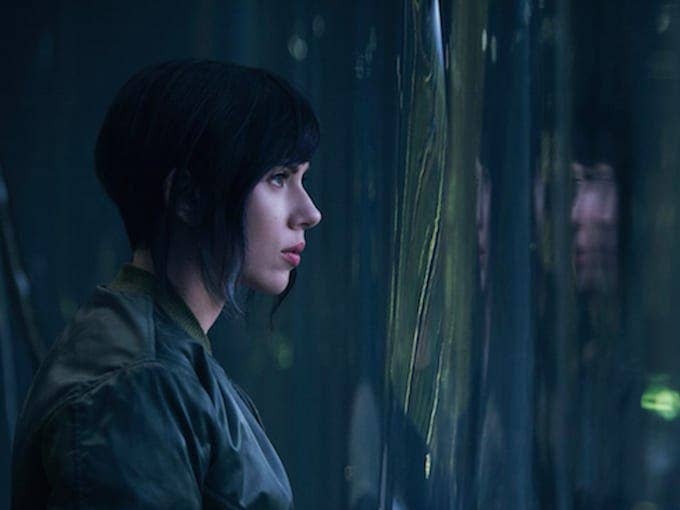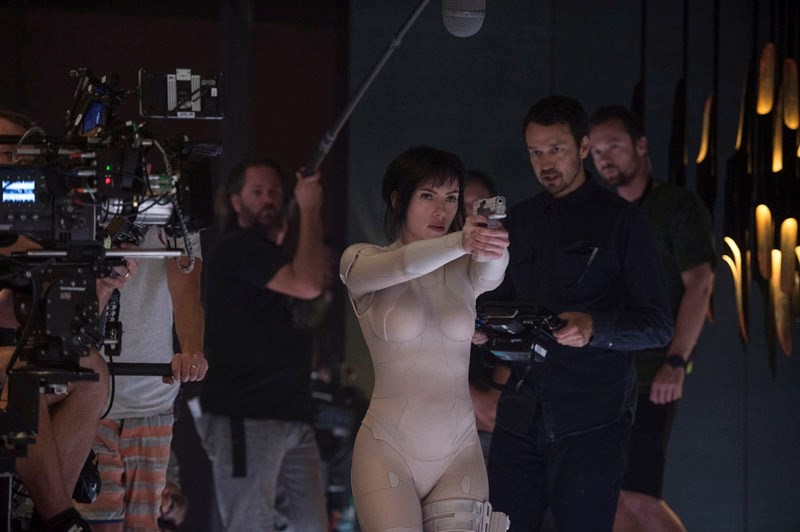Steven Paul’s attempt to insulate the film against accusations of whitewashing under the auspices of the 1995 original being quote, “a very international story,” there’s a world of difference between a film’s themes, story, and characters having a “universal” appeal and a concentrated effort to rebrand a culturally-centric narrative as a polyethnic parable in which to couch one’s bad decisions under the umbrella of faux-progressivism.

To Avi Arad’s point that the original Ghost in the Shell was “never really [about] a predictive future”, he is half-correct. Ghost in the Shell wasn’t a story about the future, it was a story about the present.
Oshii’s film embodied the raison d’etre of cyberpunk as a whole, which was to examine the dichotomy and interdependence between “high tech” and “low life” on the cusp of the 21st century. Though it took place in the year 2029, the referent of the film’s aesthetic was rooted in our world, in the claustrophobia of Hong Kong and technologic sprawl of Tokyo at the apex of an economic renaissance in its last throes.

The new Ghost in the Shell’s brand of cyberpunk, which refuses to engage meaningfully at all with its present, is to crib influences gauged only by their relative “coolness”, is to recapitulate a shallow aesthetic bred from a critical misunderstanding of a time and place, the dated fetishization of “Cool Japan” rearing its ugly head once again in the year 2017. Finally, and unfortunately, attention must turn to Oshii himself.
Mamoru Oshii’s influence on the course of anime and cinema is uncontestable. And though his word carries a tremendous weight with regard to his endorsement of Sander’s Ghost in the Shell, his argument makes no sense. With all due respect to Oshii, and there is much respect to be paid due, there is no such thing as a truly apolitical artwork.

Especially not in the case of Ghost in the Shell. To argue that the world of Ghost in the Shell, a world in which Russia has annexed a territory of the United States in the wake of the country’s balkanization at the conclusion of two world wars that secured Japan as a sole technological superpower, is so tepid of a defense as to be laughable. The choice to cast Scarlett Johansson as the Major and construct a premise of multiculturalism to legitimize her presence is a calculated intersection of art and politics. Even Oshii’s own film is shaped by politics and ideology, describing in the film’s opening epigraph a world where although the pace of computerization has accelerated, the human phenomenon of nations and ethnic groups still persists. For Oshii to argue that “artistic expression must be free from politics” while drawing from those beliefs as fodder for his own work is a textbook example of the author protesting too much.

All that said, Oshii is unequivocally right on one point. In order for Ghost in the Shell to continue to grow and evolve, the franchise must become bigger than any one director. What should remain is the series’ worldview, “to question what sort of society will be born from the close interaction of man and technology, and how that will transform human existence.” Every prior iteration of Ghost in the Shell was born out of this sentiment. The new film’s hurried and haphazard reenactment of a decade’s worth of scenes, while contributing little next to nothing new itself, is poor imitation at best and cynically calculated pandering at its worst. In the words of the Major herself, “If we all reacted the same way, we’d be predictable, and there’s always more than one way to view a situation. What’s true for the group is also true for the individual. It’s simple: Overspecialize, and you breed in weakness. It’s slow death.”